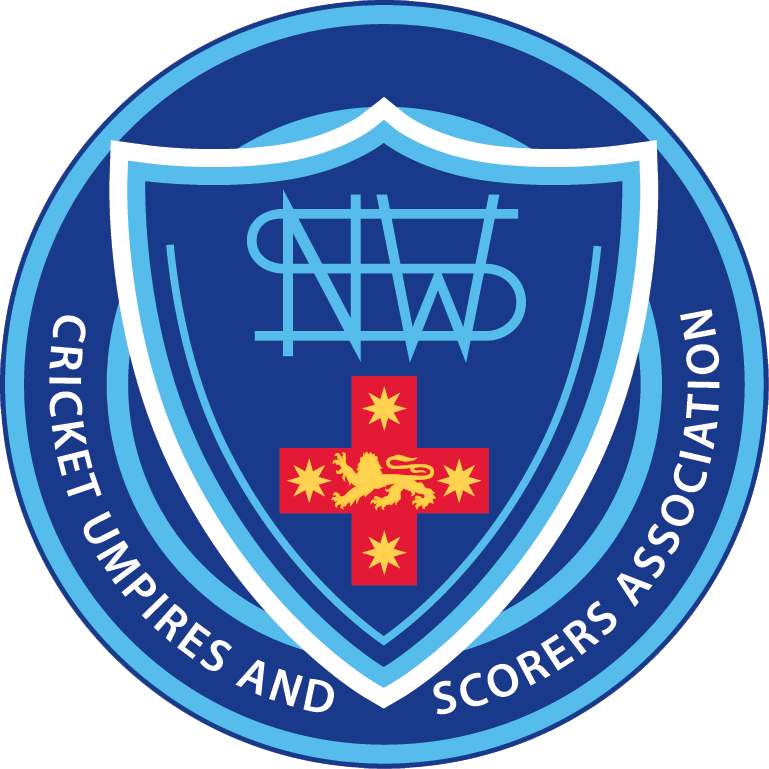Resource Materials
The NSWCUSA Scorers’ Committee is pleased to provide the below learning resources – we hope you find them helpful for scoring in any format and at any level of cricket!
A Quick Guide to Cricket Scoring – key scoring tips and techniques for reference and practise prior to scoring a match.
Junior Cricket Summary Sheet – for beginners particularly at the Junior cricket level (but can be used by anyone), it focuses on umpiring signals and types of dismissals.
Scorers’ Manual | The Basics and Beyond– a complete reference for scorers, detailing fundamental techniques and skills required of all scorers and additional topics for those who have mastered the basics.
Linear Scoresheets – some examples of linear scoresheets used by a number of our members.
SCA Scoresheet – an example page as used by scorers in men’s and women’s competitions in the Sydney Cricket Association.
Whilst these references can be used to learn about scoring, we highly recommend attending a face-to-face scorer training course, typically held just before the beginning of the season and at various points during the season depending on levels of interest, subject to COVID-19 restrictions. Interact with scorer trainers holding Representative and International match experience and assess your progress as you go. For more details and to express interest, contact nswcricketscorers@gmail.com

Standard Scoring Symbols
Whilst Cricket Australia have a set of standardised symbols for use at representative scoring level (senior cricket), we believe that, at all other levels of the game, as long as each scorer is consistent in their use of symbols then that is the most important thing.
We recommend using a ‘legend’ of symbols in the sundries section of the scorebook so that anyone looking at the book can easily identify what each symbol means.
For those new to scoring, in our training courses we recommend the use of the following symbols:
B Bye
L Leg bye
X Wicket
W or + Wide
O No ball
Duckworth-Lewis-Stern Method
In October 2021, the Association was fortunate to have Professor Steven Stern present to a group of members on the theory behind and the application of the DLS method, the session can be viewed below:
The Association has developed two resources to assist umpires and scorers with their understanding and application of the DLS Method:
NSWCUSA DLS Instructional Handout
Electronic Scoring
Whilst we are supportive of electronic scoring methods in the modern age, we do not endorse any particular system for use by scorers.
In NSW from the 2022-23 season, the PlayHQ platform is being used for e-scoring and live scoring of matches.
For more details about the new e-scoring product see PlayHQ’s support pages: PlayHQ | Electronic Scoring for Cricket and the following documents from CNSW.
Cricket NSW | PlayHQ E-Scoring Presentation
Scoring in PlayHQ: Granting Access & Data Entry
Disputed Scorebooks
We are often asked whether to take the batting or bowling as being correct when the scores are disputed.
Having reconstructed many innings ball by ball, we can say with experience that it is not possible to say that one figure is more likely to be correct over the other. Therefore, it is necessary for the umpires (or captains in the absence of umpires and coaches in junior cricket) to go over the scorebooks together and try and find any mistakes if the scorers are unable to find the problem themselves.
If this is not possible, the teams must agree on a score (in the case of a first innings) so that the team batting second has a fixed target. Once this is done you cannot go back and change that innings/score, even if you do find the error at a later time. The score of the team batting first cannot be a ‘moving target’.
If the disputed score occurs in the innings of the team batting second (i.e. the last innings of the match), and the umpires/captains/coaches cannot determine or agree on the score, then the local association’s playing conditions must be followed.
In some cases this means the umpires/captains/coaches must agree on a score, or in other cases the scorebooks shall be impounded and sent to the governing body for adjudication. Contact your Club Secretary who should be able to advise you of the correct steps to take in this instance.
Linear Scoring
The below video was put together by Sue Drinkwater, a scorer with the ECB and provides an introduction to linear scoring using Bill Frindall’s styled sheet.
Note, there are many different versions of linear sheets, some allowing for more details than others (see this page for a downloadable file with different formats)… the format you use is your choice – details may be recorded in a slightly differently way between scorers just like the traditional scoresheets look slightly different between scorers. The key points to focus on:
- Be consistent – as always, use the same symbols and coloured pens you use in your official scorebook.
- When you first start, try to fill out the batters columns with their runs scored and balls faced – these are the most common statistics asked of you in the traditional scorebook that are difficult to track without a linear sheet. Also, the running totals of innings balls, extras and of course the team score are important.
- The linear sheet is not an official record, however you should retain it in case of any questions after the match.
- Practise with a game you have scored already in your own time before trying to score in a real-time match.
- The purpose of a linear sheet is for you to quickly and efficiently recognise key milestones for individual batters, batting partnerships and team totals. It can also be a useful reference to check against what you have recorded on the scoresheet.
